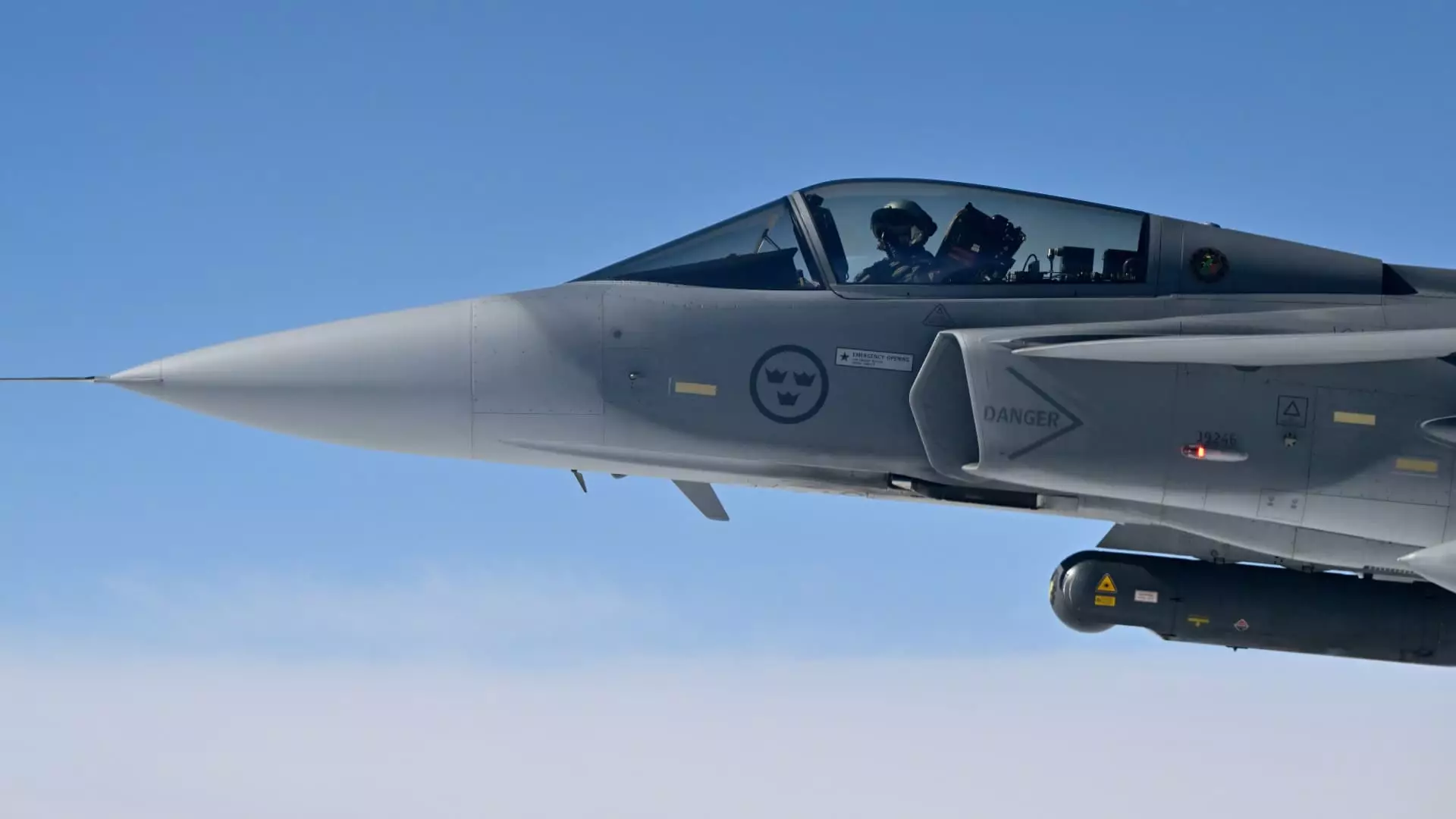The recent spike in Saab’s stock price signals more than just robust quarterly results; it reflects a complex geopolitical landscape where the notion of collective security is gaining renewed interest. The company’s 49% year-on-year increase in operating income and a 30% rise in sales underscore a defensive industry buoyed by broader regional and global shifts. Yet, beneath these impressive figures lies a nuanced reality: the defense industry is inherently entwined with geopolitical tensions and political agendas that often prioritize militarization over diplomatic solutions.
While market optimism might suggest that Europe’s commitment to bolstering defense budgets signifies a step toward regional stability, it can also be interpreted as a reactive stance driven by fear and uncertainty. Countries are increasing spending not necessarily to foster peaceful relations but to safeguard against perceived threats, creating an arms race mentality that hampers long-term diplomacy. Such a focus on military preparedness risks prolonging conflicts rather than resolving underlying issues, casting doubt on whether these financial inflows genuinely enhance security or merely escalate tensions.
The Myth of a Unified European Security Front
The European Commission’s proposed €2 trillion defense budget, along with NATO’s escalated spending goals, are often heralded as historic moments for European security cooperation. However, the reality is far more complicated. These initiatives come amid divergent interests, historical conflicts, and varying threat perceptions across member states. Deploying massive financial resources does not automatically translate into effective collaboration or strategic coherence.
Moreover, the emphasis on increased defense spending reveals a fundamental misunderstanding of security as more than just hardware and troop numbers. True stability requires diplomacy, social cohesion, and conflict resolution mechanisms—elements that are often sidelined in discussions dominated by missile silos and military contracts. The focus on rearmament risks fostering a cycle of mistrust, where nations hedge against each other, undermining the very unity that the rhetoric around collective security aspires to achieve.
The Illusion of a Defensive Paradigm Shift
Saab’s CEO, Micael Johansson, points to a heightened activity in the defense market, driven by campaigns and regional demand. While this signals industry health, it also exposes a dependence on fear-driven market dynamics. The surge in defense stocks like Saab’s is less a testament to a threat-defeating strategy and more an indication of how militarization has penetrated economic and political frameworks.
In a more balanced view, the supposed “era of rearmament” presents a paradox. The pursuit of military strength can often undermine the political will necessary for meaningful peace negotiations. Defence industries thrive in environments of insecurity, not stability. The current cycle of increased expenditure risks entrenching a security dilemma—where every nation’s defensive build-up is perceived as an offensive threat, leading to a perpetual state of suspicion and conflict.
Are We Really Moving Toward Peace or Just Reinforcing Our Fears?
European countries’ renewed focus on defense should be critically examined through a lens that questions whether militarization truly leads to security or if it merely masks the inability to address deeper geopolitical issues. Military buildup might provide short-term economic gains for companies like Saab, but it ultimately raises questions about the sustainability of peace, especially when driven by reactive policies rather than proactive diplomacy.
In the end, Europe’s approach appears to be caught between the necessity for security and the peril of escalating tensions. The real challenge lies in balancing defense capabilities with diplomatic initiatives, social cohesion, and international cooperation. If the priority remains solely on weapons and military alliances, the region risks locking itself into a cycle of conflict rather than forging a path toward genuine stability.

